I grew up with a dad who was very handy and not afraid to try new projects around the house. If you could hold a Time Life home improvement book open with a brick while trying something, dad was all in. And then I started working for my brother’s landscape business when I was 16 and it’s been go ever since. As a result I’ve just always sort of known that when you’re doing a project there’s a tool for the job, and if you don’t own the tool – you can rent it.
This is one of those things that has been such a part of my life for so long that I was a little surprised to hear Adam Savage make the comment (in a podcast interview with Kevin Kelly) that he was amazed to learn you could rent a jackhammer. Or a saw. Or a bulldozer. Well, duh, right? And then I realized that my experience was clearly, um… atypical?
Having realized that not everyone knows you can make one phone call and three hours later you’re knocking down a garage with someone else’s $100,000 excavator, I decided to put together a post with some of the most useful equipment you can rent from your local rental yard. A couple of points first:
- don’t be afraid to ask how exactly to use whatever you’re renting, and make 100% sure you ask how to turn it on. I’m serious, especially because a good rental yard will flip the switch or lever that shuts off the fuel tank so gas doesn’t get all over your truck, but they’re really bad at telling you where said fuel shutoff IS.
- find out what parts you’ll get charged for if they come back excessively worn or damaged. First time I ever used a stump grinder I beat the snot out of it and ended up having to replace most of the teeth. Which was not in the budget.
- Be sure to bring it back clean and full of fuel unless they tell you otherwise. First off, it’s polite, and second, you’ll get charged.
Here’s my list of some of the most useful equipment you probably didn’t know you could rent:
Jackhammer
As I mentioned in my post on how to remove concrete steps and slabs you can rent a jackhammer for not a lot of money. You typically have a couple of options when it comes to jackhammers. I recommend renting an electric jackhammer because all you need to make it run is an extension cord and an outlet, and it’s plenty of power for most DIY jobs. The other option is an air-powered jackhammer, which can be a lot more aggressive but needs an air compressor to work. And I don’t mean an air compressor like what your cabinet guy carries in to power his nail gun, I mean an air compressor that you tow behind a truck. My local rental yard has a 60 pound electric jackhammer for $65 per day so it’s totally affordable. Just wear steel toed boots, okay?
Aerator
A core aerator is a small powered machine that you wheel around your lawn and it pulls out plugs of soil to resolve issues with compaction. Since you’ll use it once, maybe twice a year at most, I wouldn’t consider buying one when you can rent one for $100/day.
Chipper
The movie “Fargo” has ruined chippers for all fans of Coen brothers movies but it’s still a really useful tool if you’ve been clearing a lot of brush or dropping trees. I recommend always getting the biggest one you can because you may think you don’t need to chip anything bigger than 6 inches, but… you will if you can’t. That’s how these things work.
The one thing I will say about renting a chipper, though, is they’re not cheap. I’m looking at $425 per day for one here, and then I’d still have to deal with that massive pile of chips. If you have a big brush pile that needs to go away you should consider calling a local tree service. When we moved into our house I cut down so much brush that we had a pile 30 feet long and 20 feet wide, 10 feet high. It was less expensive for me to hire a tree company to bring their chipper over and do the work for me, and they got rid of the chips. Just something to think about!
Sodcutter
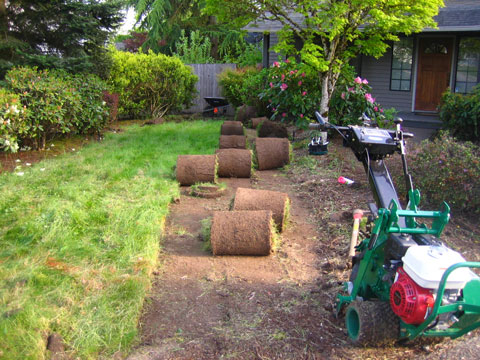
A sodcutter is one of the best machines ever. When I was 23 and working in California, labor was so cheap we didn’t use machines. My boss threw six of us at a yard, handed us each pickaxes, and told us to remove the sod. A decade later when I wanted to create beds at my house I figured I could do it the same way. Yeah, I was not in the same shape I was back then. A hundred bucks a day for a machine that cleanly slices the sod off just below the roots is well worth it. Just know that it’s a heavy beast of a machine. If you have a trailer with a ramp, great. If not, make sure you have someone to help you lift it in and out of your vehicle.
Mini-excavator
A skilled operator can use a mini-excavator to quickly dig out for a patio or wall footers. A rookie operator will take forever but have a LOT of fun doing it. Mini-excavators are also useful for digging trenches, removing stumps, setting stones (either with straps or with a hydraulic thumb), and knocking down outbuildings. It’s also a fast and easy way to load wheelbarrows. My recommendation is to tell the rental yard what you’re planning so they can size the machine appropriately. The smallest ones can actually be driven through a gate and can trench just fine, but you won’t be pulling stumps or slinging boulders. I can get an 11,000 pound mini-excavator for $225 a day and that’s about as much machine as you’ll probably need. If you need something bigger than that, I’d think long and hard about whether or not it’s time to call a pro.
Skid Steer
Also known as a Bobcat (a brand name), a skid steer is a really useful darn piece of equipment. They’re fast and powerful and with a smooth bucket you can move and spread soil, stone, and other bulk materials. With a toothed bucket you can go hog wild digging in our nasty clay. Other attachments include pallet forks, a rock hound (you drive backwards and it rakes out rocks and smooths the soil, trenchers, augers, power brooms, jackhammers, and who knows what else. You’ll be in the $300 and up range depending on size, power, and whether it’s driven via wheels or tracks. They used to be really hard to learn to use but in the last ten years the controls have become pretty intuitive. Just go slowly; it’s never pretty to see someone roll one.
This is a short list but it gives you an idea of what’s out there. More modern rental yards have their catalogs online, but the others will have a printed catalog they’ll be happy to give you if you stop by. The folks who can give you any manner of tools to play with just might become your new best friends!

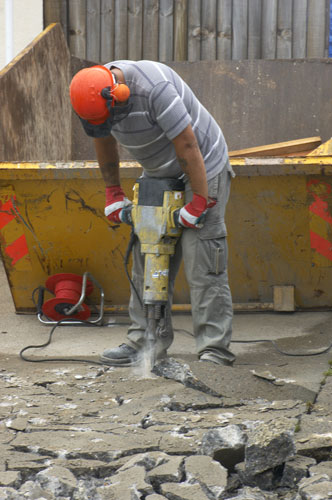

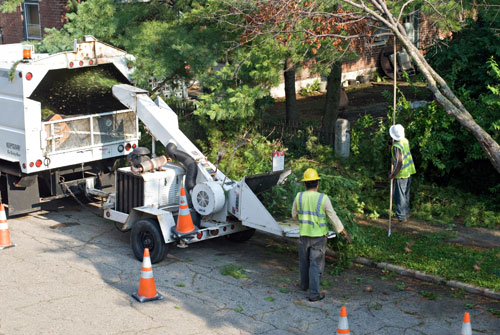
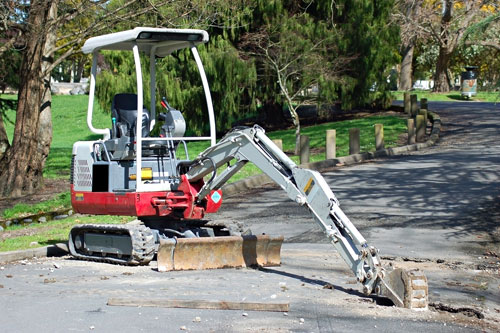
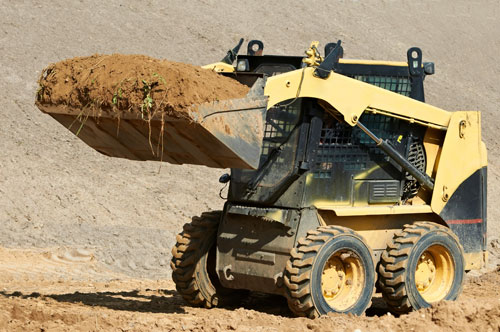
This is a great article for those on the fence about whether or not to rent equipment for a project. My mom had these shoes that resembled cleats that we’d wear and walk around on the lawn to aerate it. It was fun as a kid, but now that don’t have the luxury of time, I’d be happy to rent the equipment to do the job for me. Thanks for posting!
thanks for commenting Stephanie!
These are definitely good things to rent instead of buy, and I really appreciate your advice beforehand regarding knowing what you’re doing. The fact is that some of these tools have the potential to be very dangerous if not used correctly, so it’s important to know how to use them. Of course, once you do know how to use them, these rentals can be incredibly useful. Knowing how to use them will not only make things safer, but also more efficient. Great advice.
thanks for stopping by, Will!
I actually didn’t know that you could rent some of these tools. I’ve been thinking about buying an aerator, but you’re right, since you’ll only use it once or twice a year it may be more cost effective to just rent it. I’ll have to look more into that. Thanks for sharing.